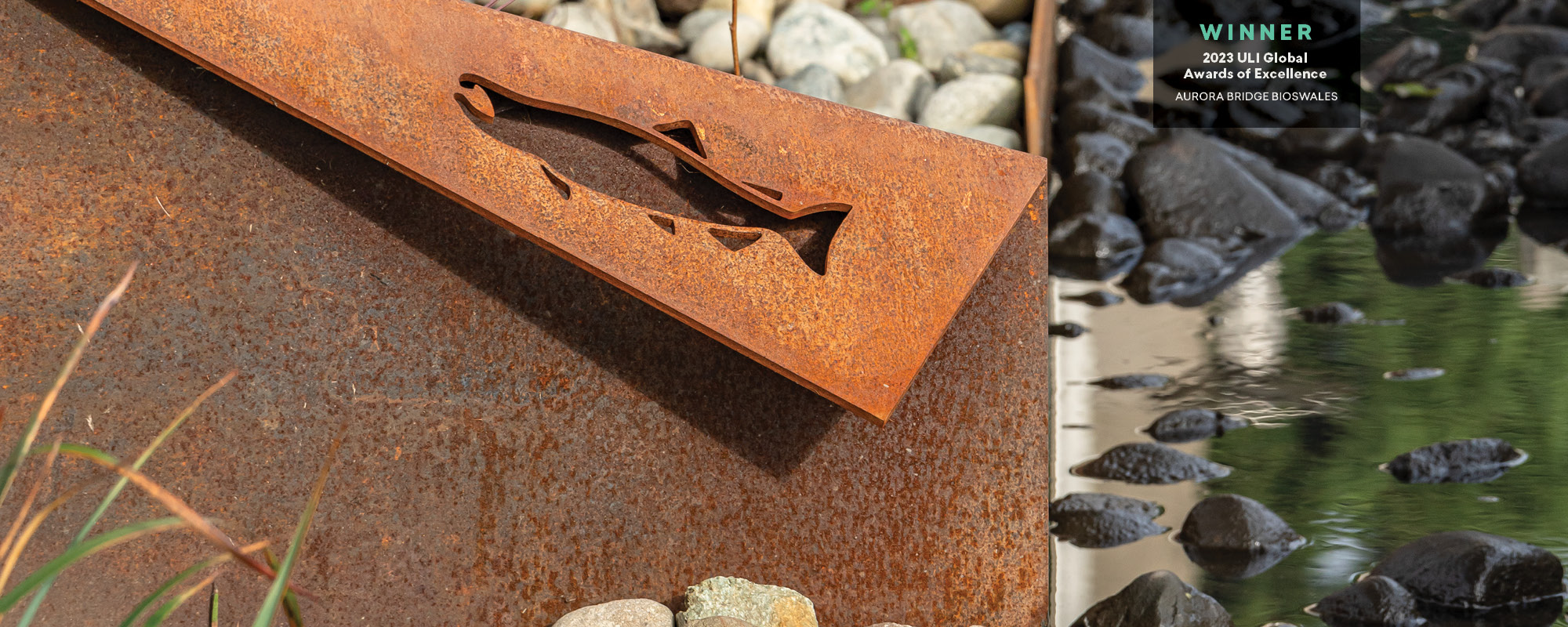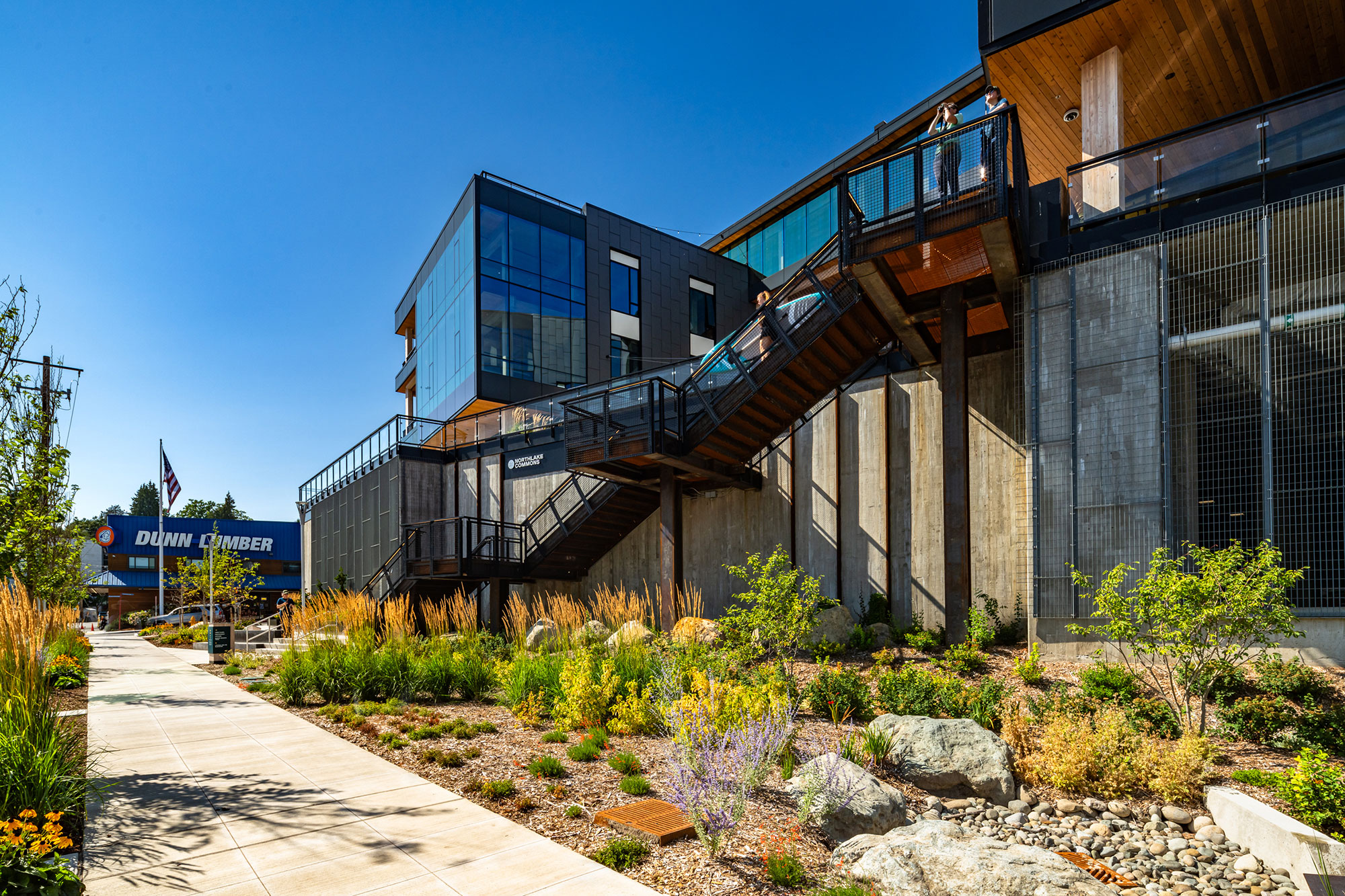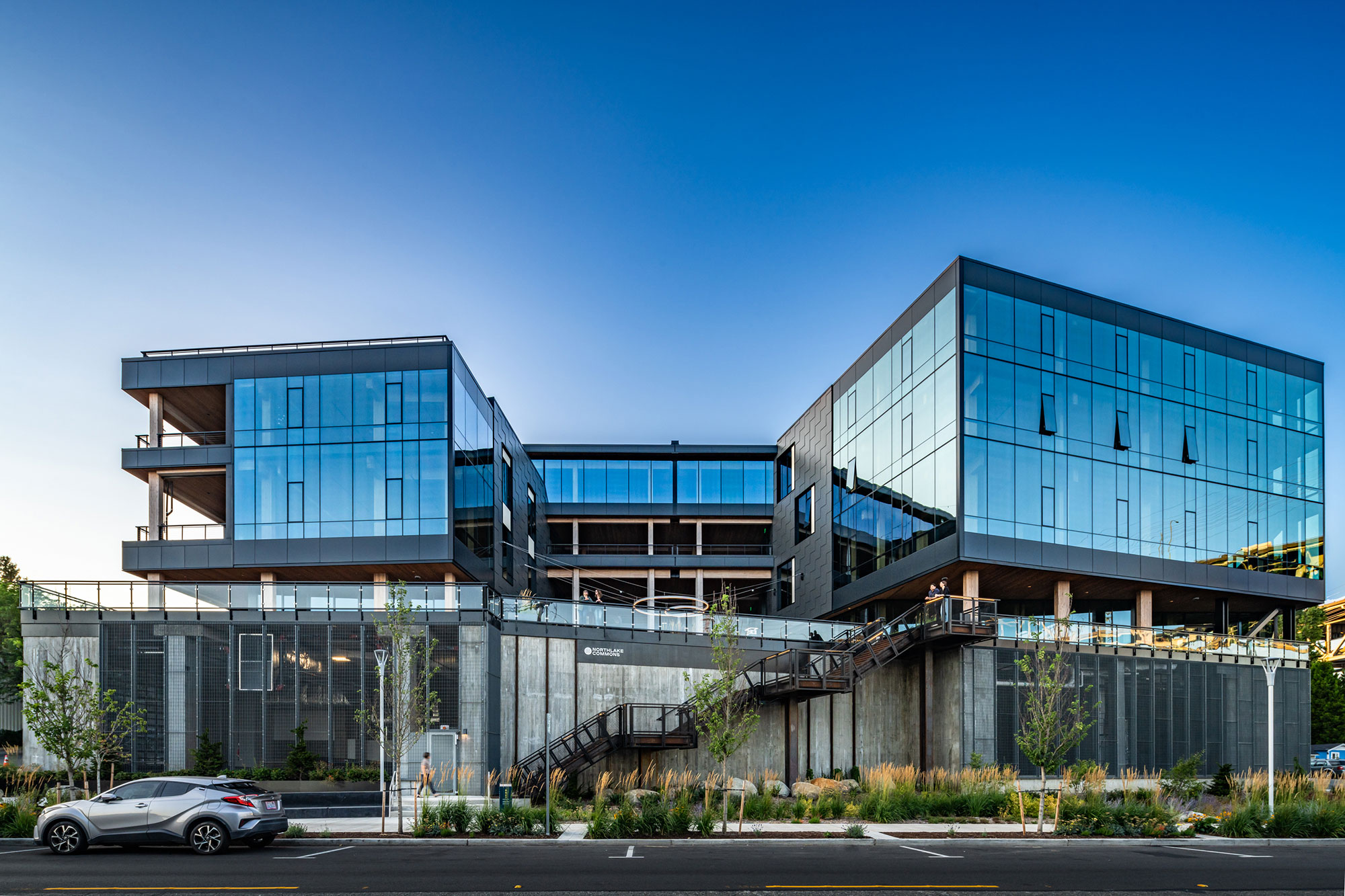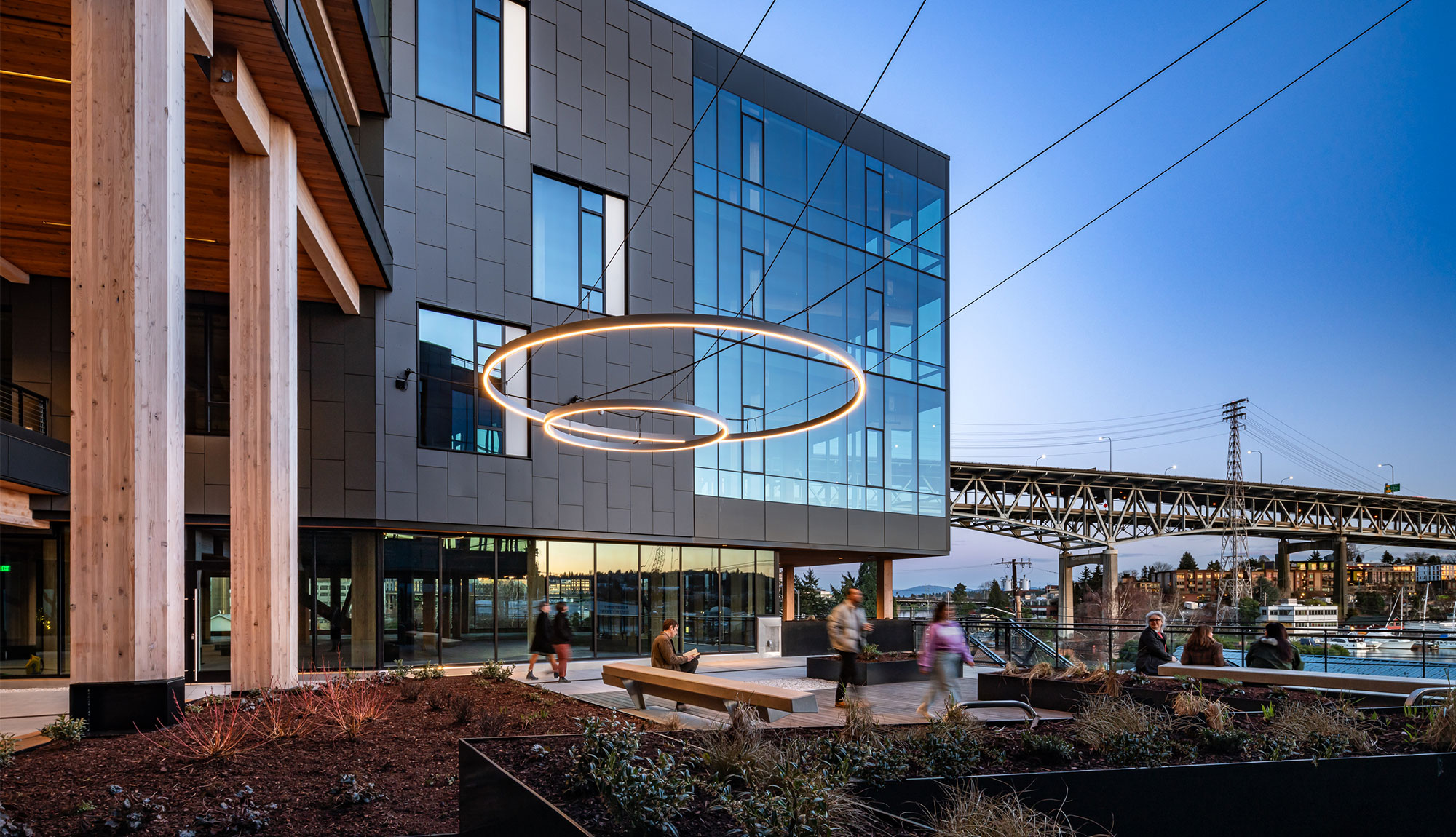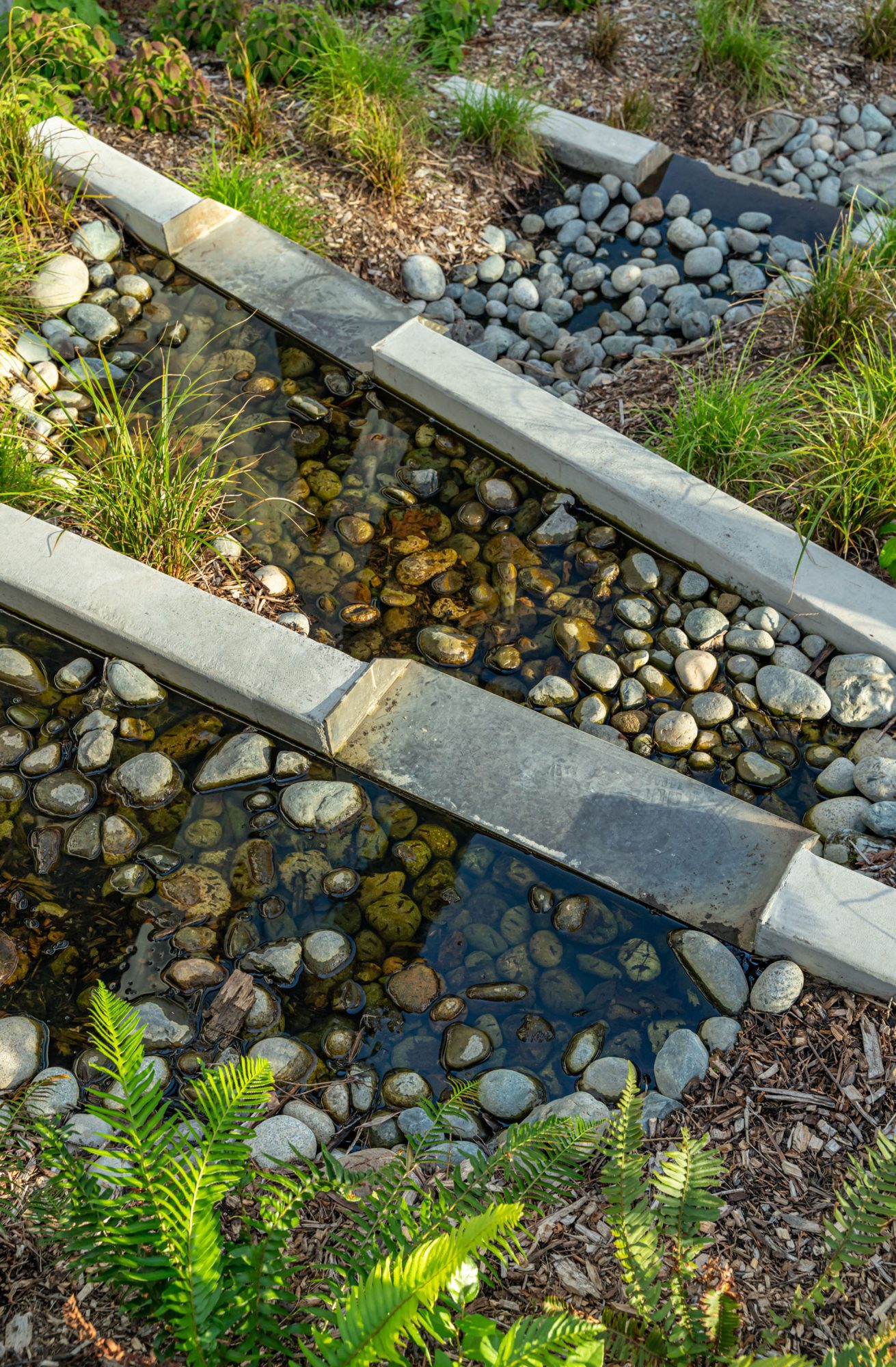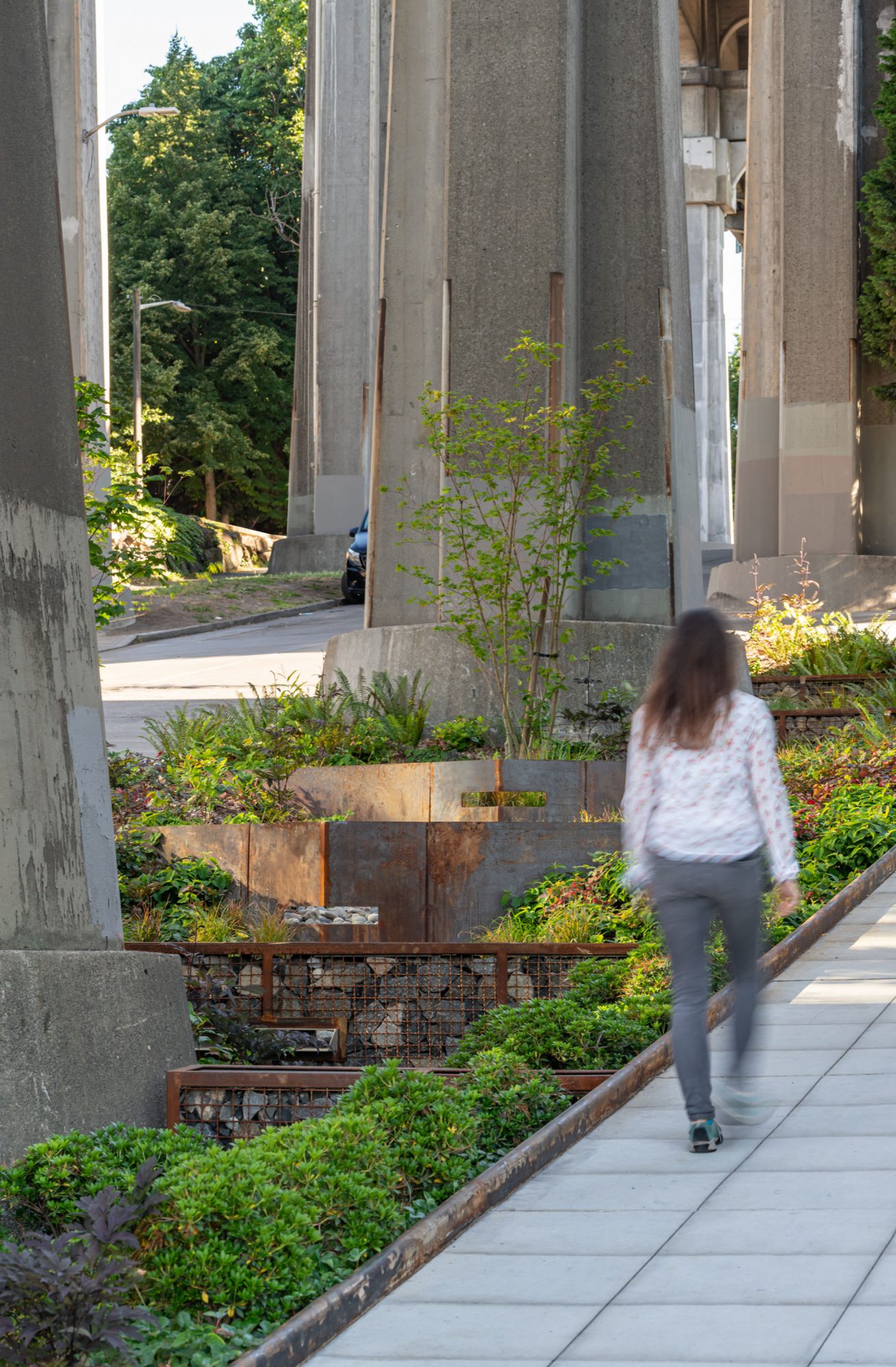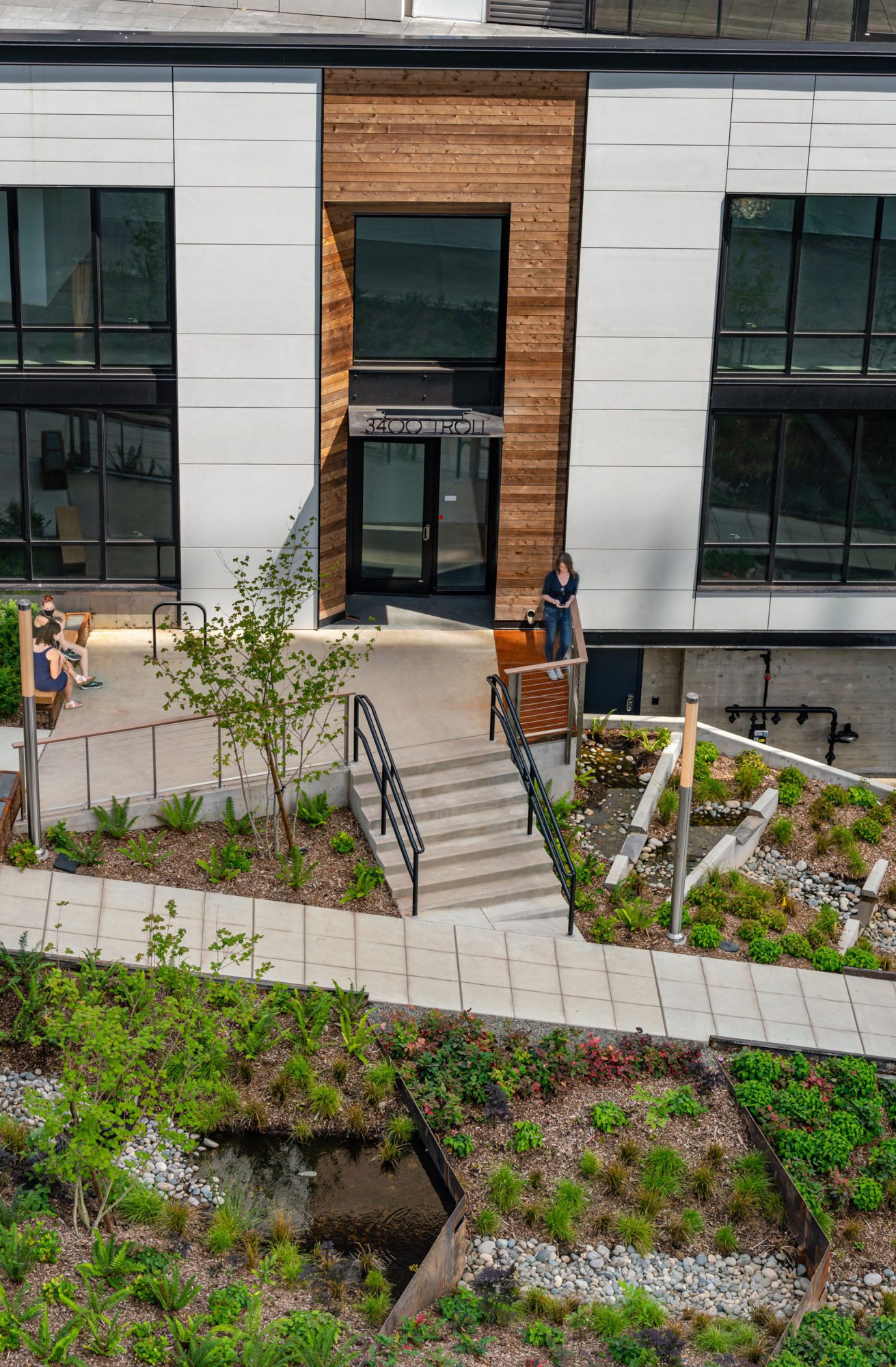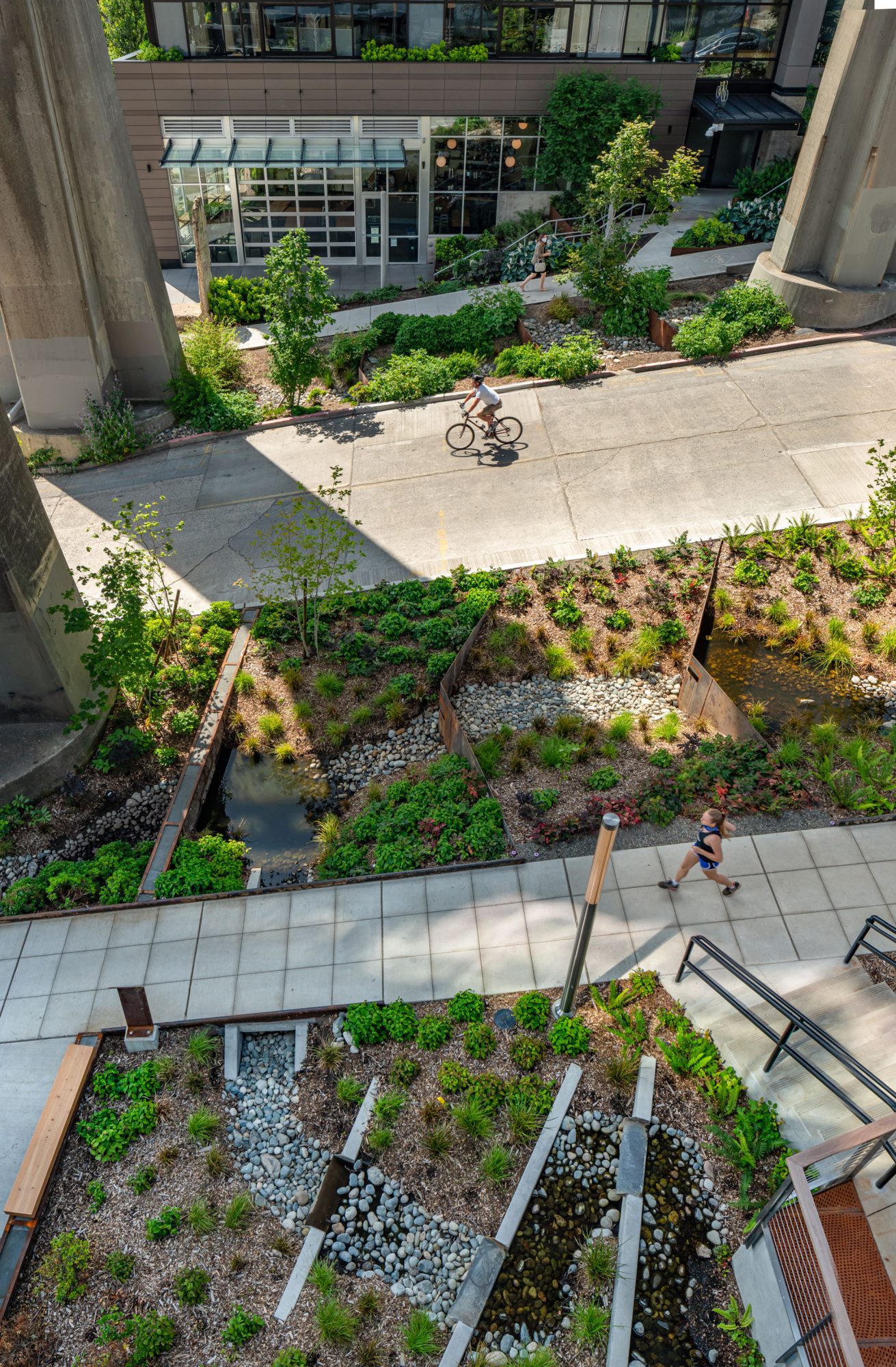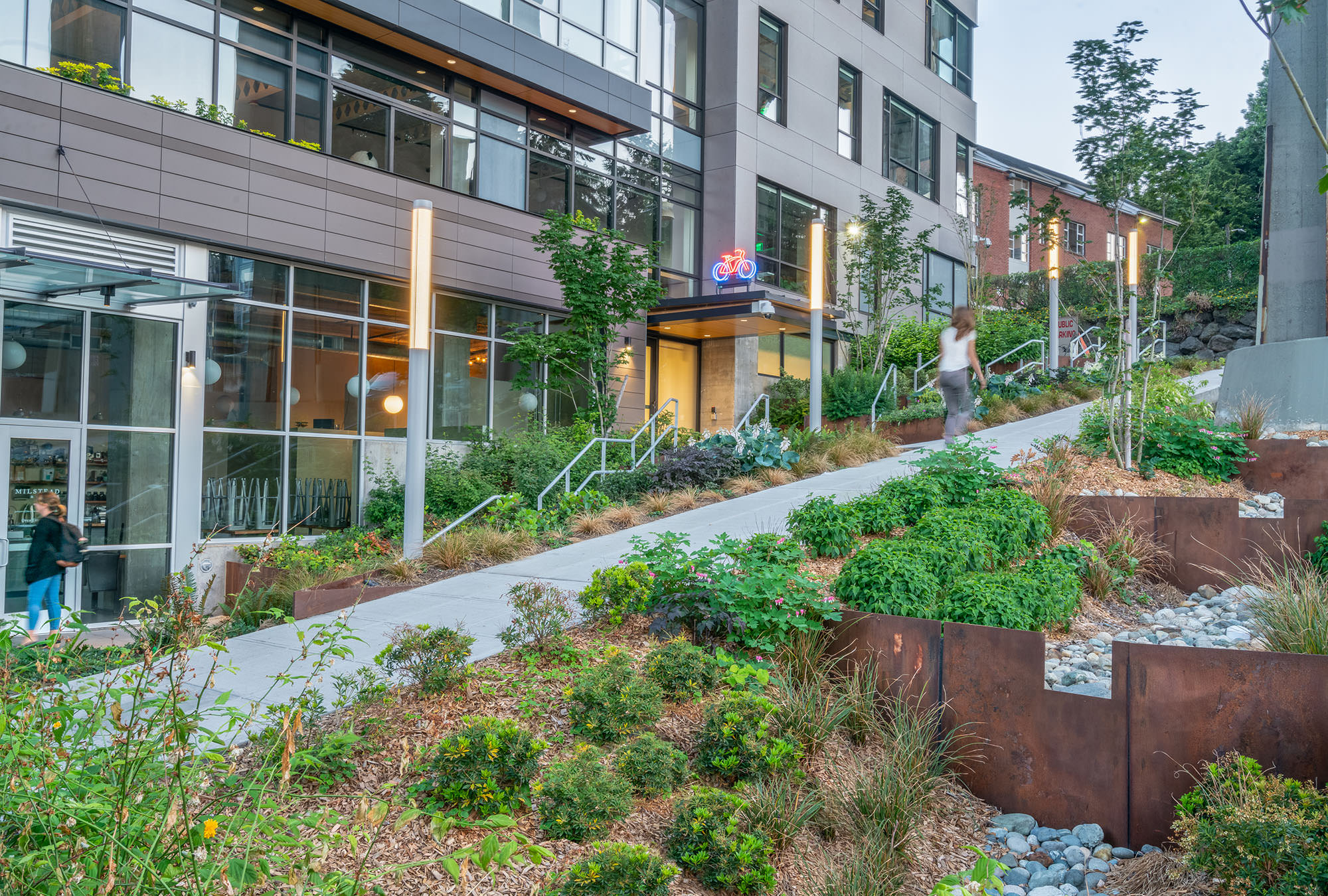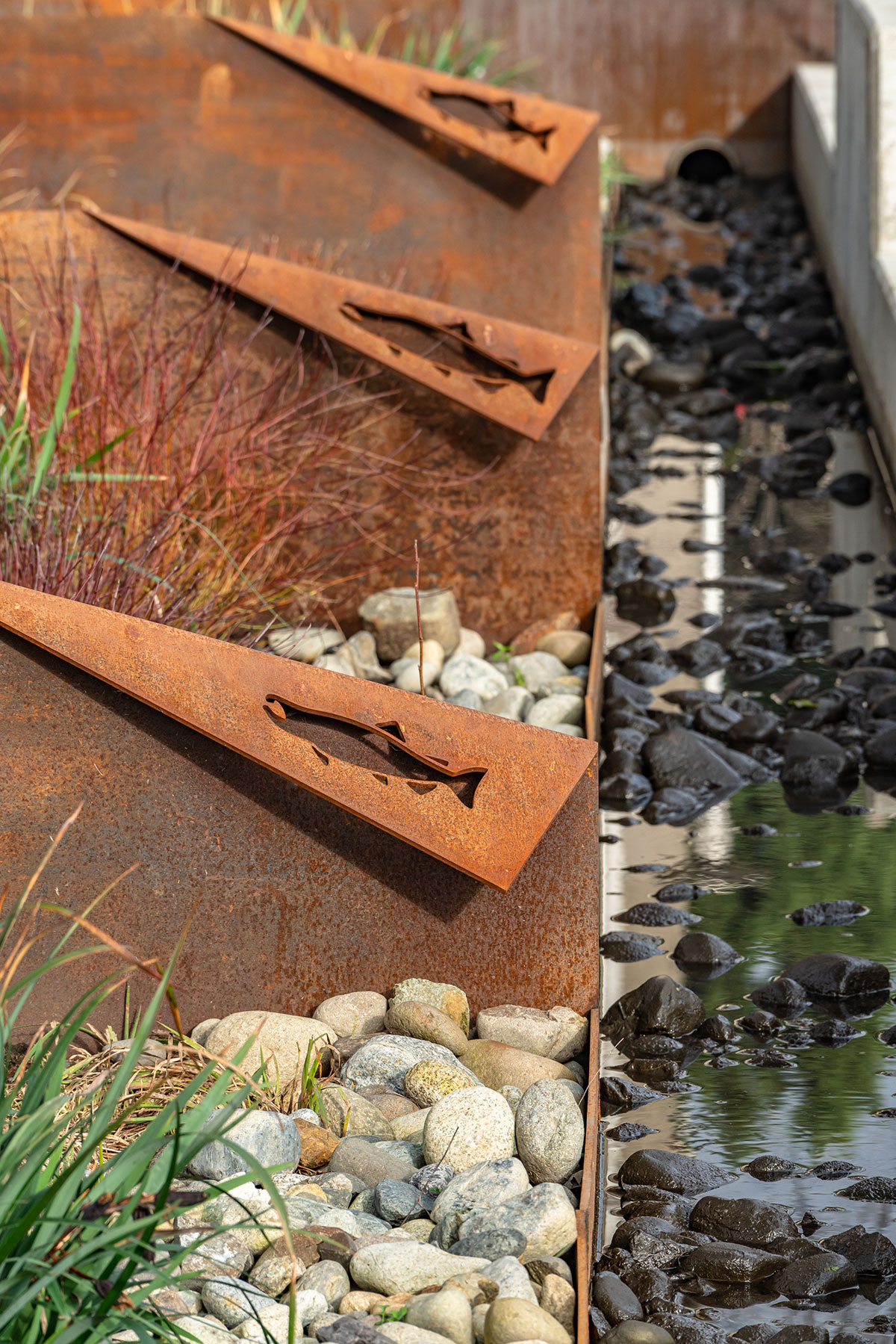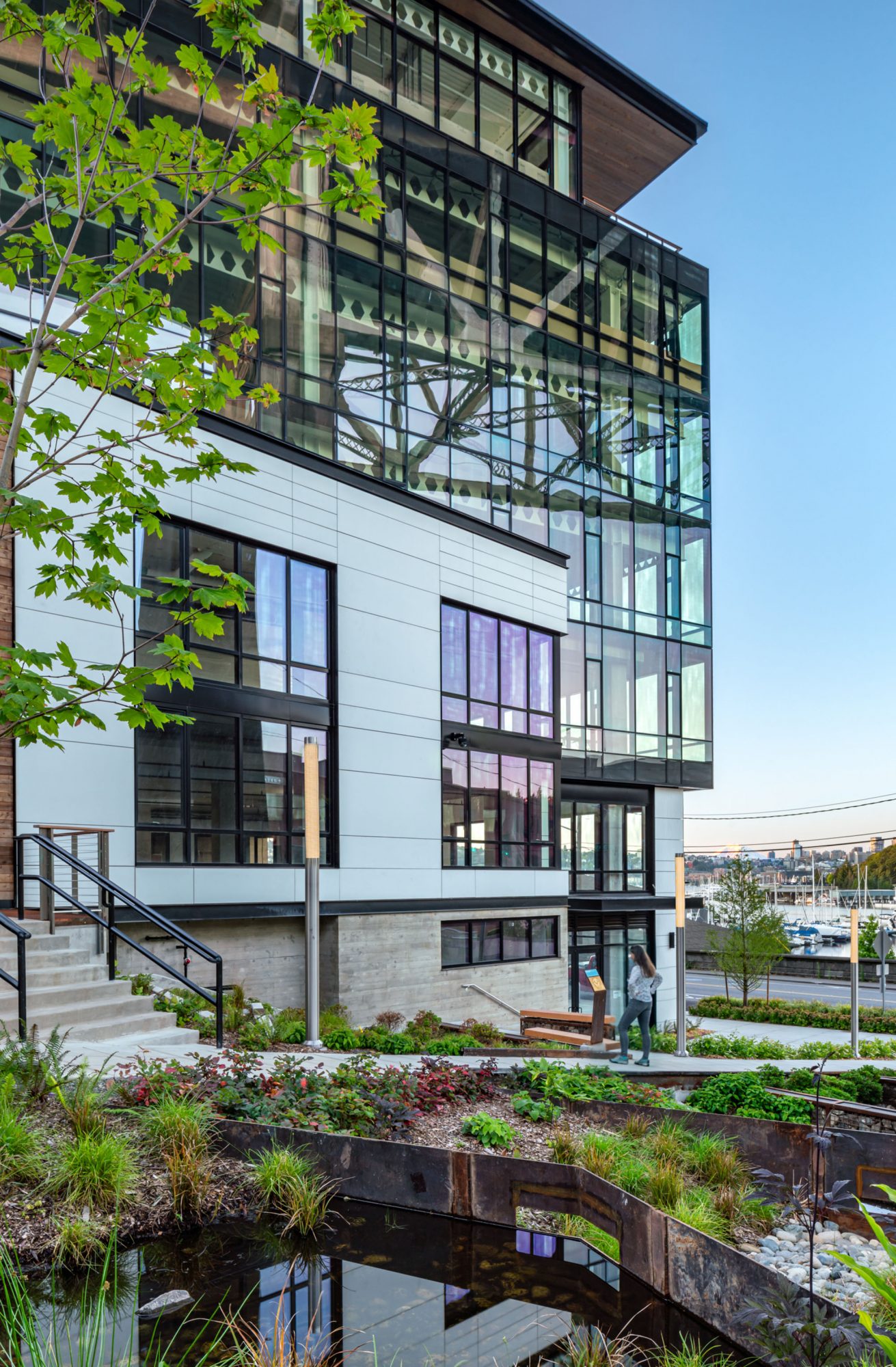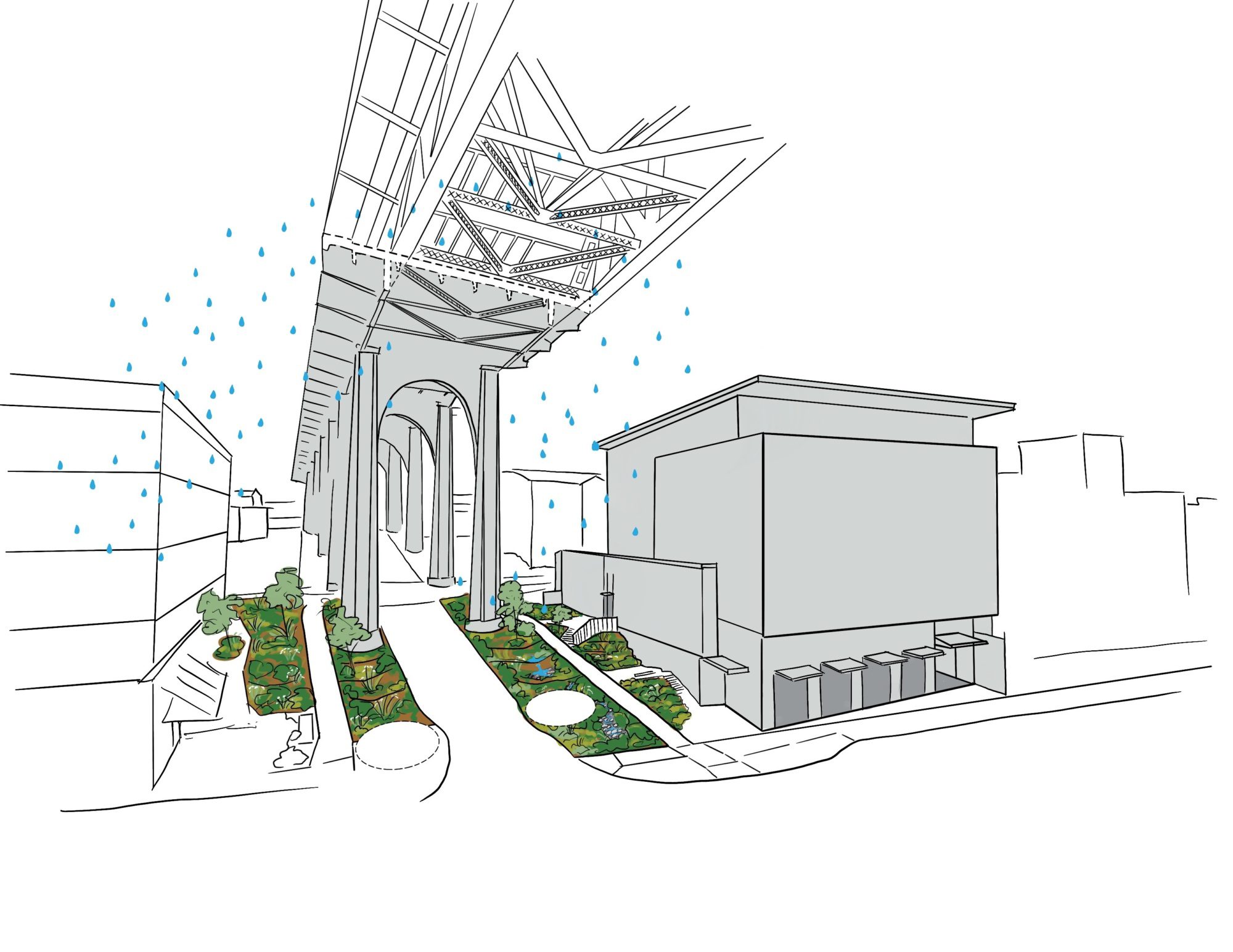Urban Stormwater
An appreciation and respect for nature is built into the code of our Landscape Architecture practice.
Our work restores urban ecological health by transforming interstitial spaces into thriving landscapes that merge technical engineering with inviting settings. These projects manage, slow, and clean stormwater, benefiting species and the broader environment while creating spaces where people and nature connect.

Northlake Commons
Northlake Commons, an innovative full-block project on Lake Washington, integrates green stormwater infrastructure through a public-private partnership with Seattle Public Utilities, capturing and filtering 2.6 million gallons of stormwater annually. The regional bioswale improves water quality, supports pollinator habitats, and benefits local salmon populations.
Additionally, a new public plaza connects to the Burke-Gilman Trail, featuring tiered seating, retail access, and pedestrian paths, enhancing community connectivity and respite spaces.
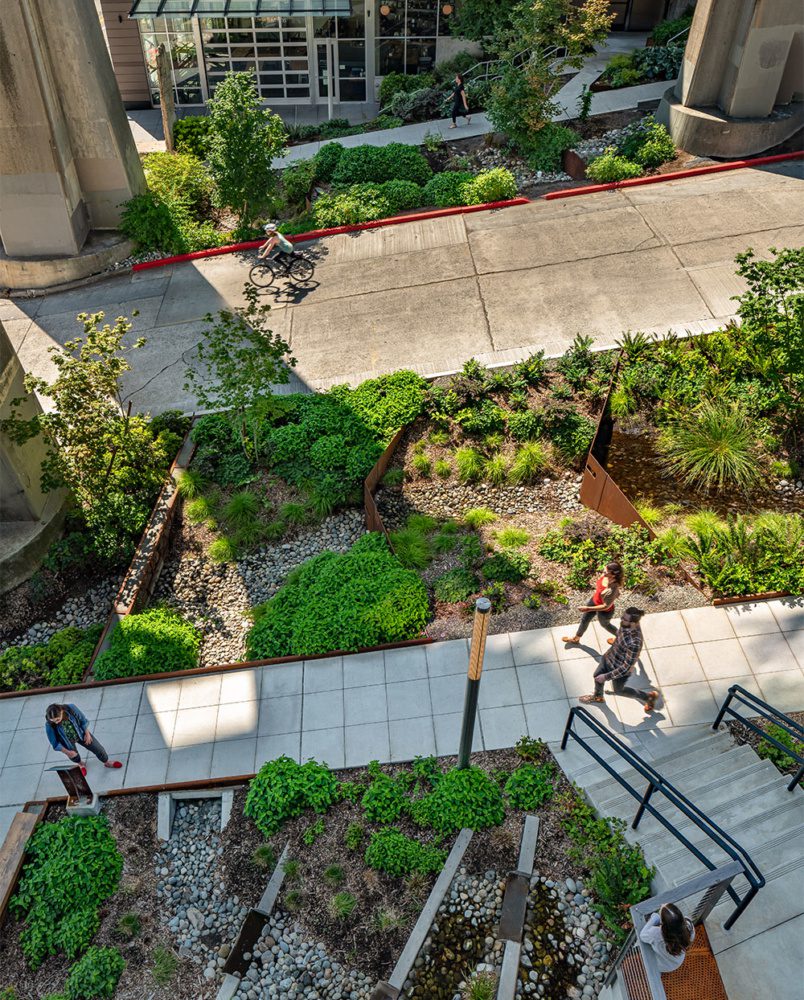
Watershed
Watershed embodies a vision of water conservation, reclamation, and treatment, participating in the Living Building Pilot program to positively impact its neighborhood and region. Verdant bioswales, a cantilevered shed roof, and cascading steel channels capture, reuse, and treat site water. Bioswales filter 400,000 gallons of polluted stormwater from nearby streets and the Aurora Bridge annually, while the shed roof directs 200,000 gallons of rainwater into cascading channels and a subgrade cistern for reuse, reducing water usage by 68% compared to typical office buildings.
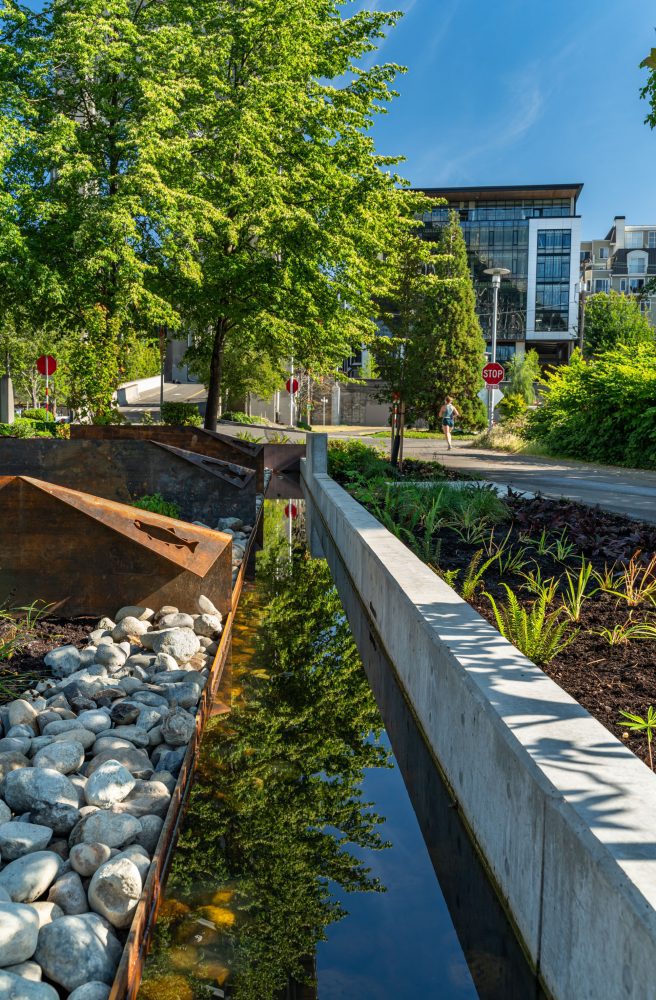
Aurora Bridge Swales
The Aurora Bridge Swales project harnesses natural processes to address the human-made issue of polluted roadway runoff. By applying emerging science, securing necessary approvals, and delivering cleaner water, it transforms a once dark, unsafe tract beneath the bridge into a welcoming community space with verdant habitat, public seating, and educational signage. The swales filter 2 million gallons of toxic runoff annually, improving Seattle’s waterways and offering a replicable model for green urban infrastructure. This project highlights how urban development can enhance environmental health, providing a call to action for cities to prioritize green solutions that benefit both people and nature.
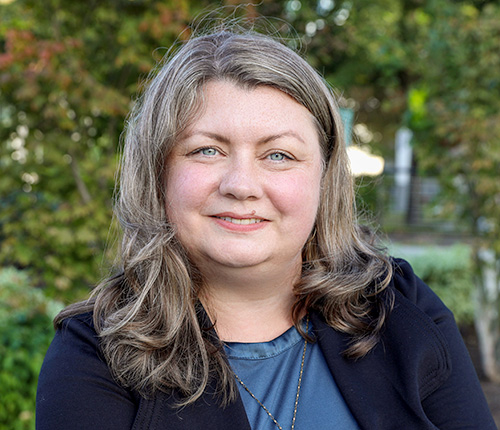
Contact
Rachael Meyer PLA, LFA, GRP, LEED AP
Landscape Architecture Principal, Director of Sustainability
Rachael designs vibrant landscapes for private and public clients that mitigate, clean, and slow stormwater. An early leader in green roofs and GSI strategies, she integrates living systems into urban settings, leveraging tools like Seattle’s Green Factor to maximize green infrastructure investments.
Rachael bridges large-scale stormwater planning with detailed design, advancing urban landscapes through implementation, research, and public engagement, while regularly sharing expertise on water management and living systems.
